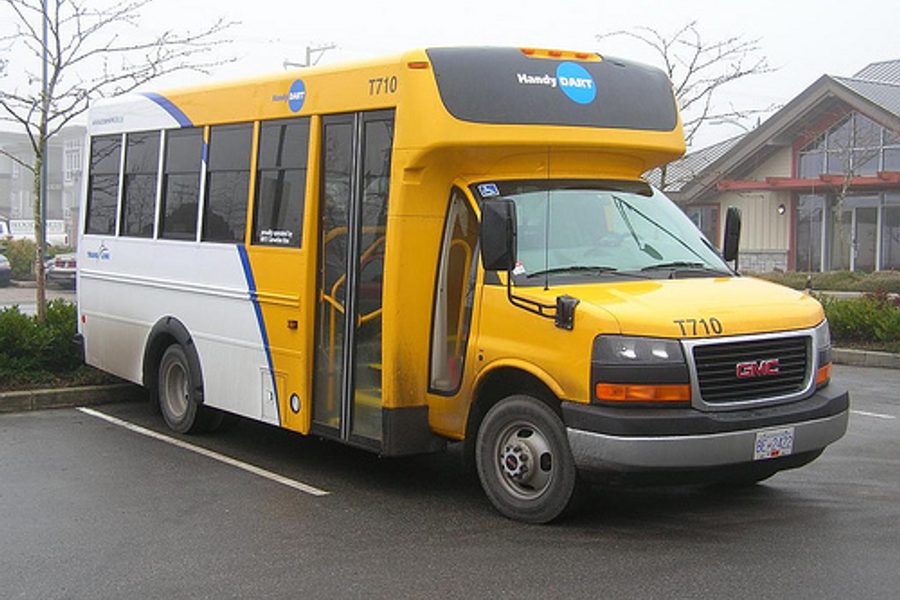
When I passed the HandyDart picket line on North Road in New Westminster, B.C., it was not yet 5 p.m. But it was already so dark that I strained to read the large hand-lettered sign through the rain and fog. Despite the miserable conditions, workers were still on the line in full view of holiday traffic.
The 450 striking HandyDart drivers and 50 office staff belong to Amalgamated Transit Union 1724. Last year, their jobs were subcontracted out to a for-profit U.S. company keen to cut costs. The drivers are fighting to keep their pensions.
The strike is a fight for the soul of the HandyDart service, a transit system for elderly and disabled British Columbians. Will it continue to be a professional public service, or will it be subcontracted out to the lowest bidder? HandyDart was founded in 1981 when disability rights activists convinced the local government to create a professional public paratransit service.
A HandyDart operator is equal parts driver and care aid. They operate hydraulic wheelchair lifts, wrangle walkers and oxygen tanks, and make sure patients get to their appointments safely. Cleaning up vomit and other bodily fluids is part of the job.
Drivers often lend a sympathetic ear to their regular riders.
“We find that all our HandyDart operators treat us with the utmost dignity and respect, and care deeply about us as people,” wrote J. Cressman, a 12-year HandyDart user, in a letter to the editor of the Tri-City News.
“I came to know that driving or dispatching HandyDart vehicles represented as much a calling as a paycheque,” retired operator Tom Sandborn wrote in an op-ed in the Tyee last month. Sandborn says he drove the bus for 20 years, but left without a pension.
Like so many government services, HandyDart, which runs about 5,000 trips per day, has been targeted for privatization in recent years. The drivers’ immediate boss is an American company called MV Transportation, motto: “We provide freedom.”
In 2008, MV won the contract to provide HandyDart service to greater Vancouver.
Before MV took over in January 2009, the drivers were represented by seven different unions — at the outset, between 60% and 75% of them were on the regular city pension plan. MV wanted to eliminate pensions and replace them with retirement savings plans. The HandyDart drivers had had enough.
On October 23, 2009, ATU 1724 voted to strike by a margin of 97% — it was the local’s first strike in 30 years. The next day, 300 HandyDart riders, drivers, and supporters rallied in Burnaby. The strike began on October 26.
MV Transportation could not immediately be reached for comment; we’ll let you know if they get back to us.
The drivers are fighting an uphill battle for public opinion.They have been accused of selfishly abandoning their vulnerable clients. It has indeed been a trying time for those who rely on HandyDart. Many users say they’ve spent hundreds of dollars on taxis. Some are virtually housebound.
However, the bitter dispute may soon be over. The union and management went into mediation on December 10. On Saturday, the union announced that it would put a contract offer to a vote on Tuesday, December 22.
Working ITT reached ATU 1724 spokesman Tyler Felbel on Sunday night. He declined to comment on the the agreement. He explained that the union won’t discuss the contract publicly until after it gives the information to members at an upcoming meeting.







